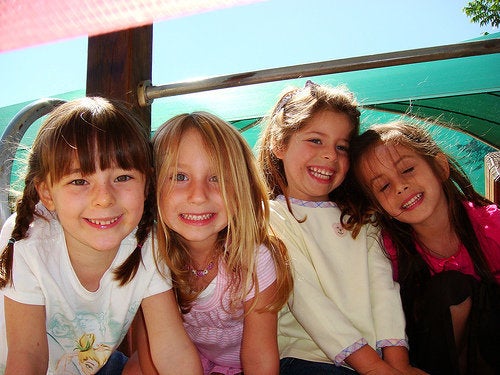
The BBC recently ran a story that explains much about why the rest of the industrialized world has long been puzzled and horrified at U.S. policies toward guns. The story reported that, in the space of twenty-four hours, two young American children had been shot by their young siblings. In Las Vegas, a two-year-old girl was in critical condition after being shot by her four-year-old brother. She later died from her wound. In Gray Court, South Carolina, a four-year-old was shot in the stomach by his three-year-old brother. He was expected to survive.
The Las Vegas shooting occurred in the children's home after the four-year-old boy found a 9mm handgun. The South Carolina shooting happened when the kids and their father were staying at the home of a family friend, when the three-year-old found the gun under a bed. In Vegas, it was the second gun tragedy within a week involving a young child. A five-year-old boy died after shooting himself in the head with a handgun he found in his father's car.
These tragedies are not isolated events, at least in America. In 2006 alone, 31 American kids under the age of 10 were killed in unintentional shootings and 187 were injured. The numbers increase substantially with older children. Indeed, the unintentional gun death rate for children under 15 is nine times higher in the U.S. than the combined rate in 25 other industrialized nations.
When kids accidentally shoot kids, who is to blame? The first culprit is the irresponsible gun owner who would leave a loaded gun accessible to children. In America, this behavior is shockingly common. According to one study, an estimated 2.6 million children live in homes where at least one gun is stored either unlocked and loaded, or unlocked with the ammunition in the same location as the gun. These guns are like ticking time bombs. Generally speaking, the problem is not with rifles and shotguns used for sport. They are more likely to be stored unloaded and locked up. The bigger problem is handguns, bought primarily for self-defense.
Why would so many handgun owners put their kids (and other kids) at such risk? Consider how handguns are marketed in America. The core marketing appeal is to fear - the fear of being unarmed when faced with an armed attacker. Some years ago, a particularly infamous Beretta ad showed a Beretta semiautomatic pistol and a bullet for the gun sitting unsecured on a nightstand table. Next to the gun were a photo of a woman with two young children and a clock showing the time as 11:26 p.m. The headline read, "Tip the odds in your favor." The text addressed those who are "considering a handgun for personal protection."
The ad was a transparent attempt to exploit the entirely understandable fears of single mothers and it went so far as to depict the completely unsecured storage of a pistol next to its unsecured ammunition in a house with young children! The irony of all this is that when Beretta and other gun makers are sued for failing to install safety devices to prevent accidental shootings involving children, their response invariably is to blame the gun owner for leaving guns unsecured, precisely the conduct encouraged by the industry's fear-based marketing.
The problem is that the legitimate fear of criminal attack leads too many gun owners to the conclusion that it is not enough to possess a gun; they need immediate access to their gun. Some years ago, the National Rifle Association published a poster posing this question to women considering buying a gun: "Should you shoot a rapist before he cuts your throat?" The question, of course, supplies the answer. If the issue of gun ownership is framed so that the only relevant consideration is whether you should be able to shoot an attacker as he approaches in your bedroom, then it makes perfect sense to have a loaded handgun in the nightstand. No time to mess around with unlocking a trigger lock and loading the gun. But this framing of the issue ignores the other risks created by the loaded gun in the nightstand, like the risk of children shooting children. That risk is not confined to the children of gun owners, as shown in the South Carolina shooting.
Despite the gun industry's fear-based strategy for selling handguns, every major handgun manufacturer warns its consumers to store their guns locked and unloaded, with the ammunition and the gun stored in different locations. These warnings represent the gun industry's implicit recognition that the benefits of immediate access to handguns in resisting attack are outweighed by the risks of unsecured guns.
When children are shot because these warnings are ignored, gun owners should be legally accountable, as they are now in eighteen states. Under the threat of legal liability, some years ago major gun manufacturers began to design their guns with internal locks to prevent access by children and other unauthorized users. All guns should be required to have such locks.
Yes, in the landmark Second Amendment case District of Columbia v. Heller, the Supreme Court last year found a constitutional right to have handguns in the home for self-defense. In that same ruling, the Court also suggested that "laws regulating the storage of firearms to prevent accidents" are entirely compatible with that right.
There is no right to render children defenseless against guns.
For more information, see Dennis Henigan's new book, Lethal Logic: Exploding the Myths that Paralyze American Gun Policy.